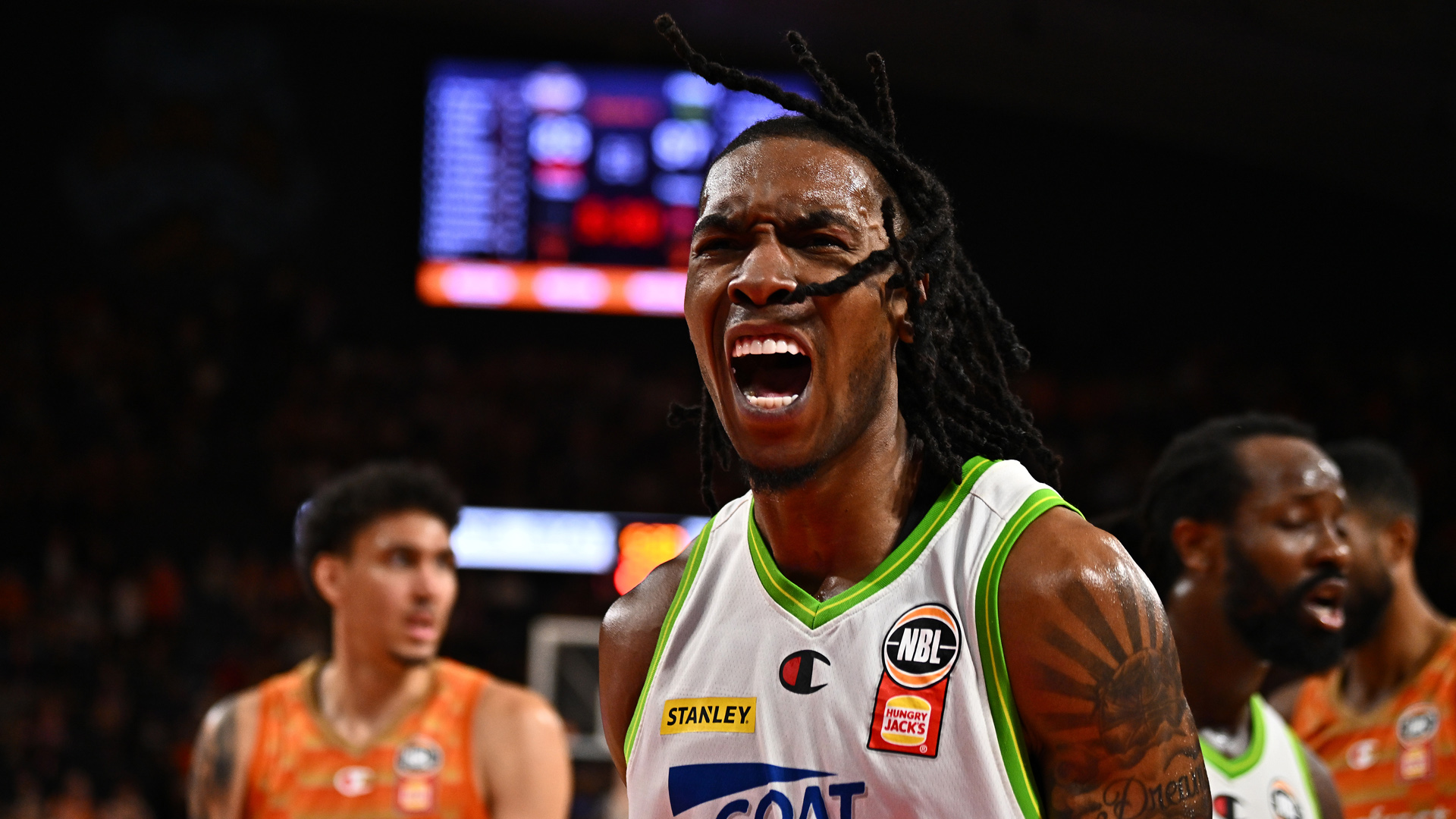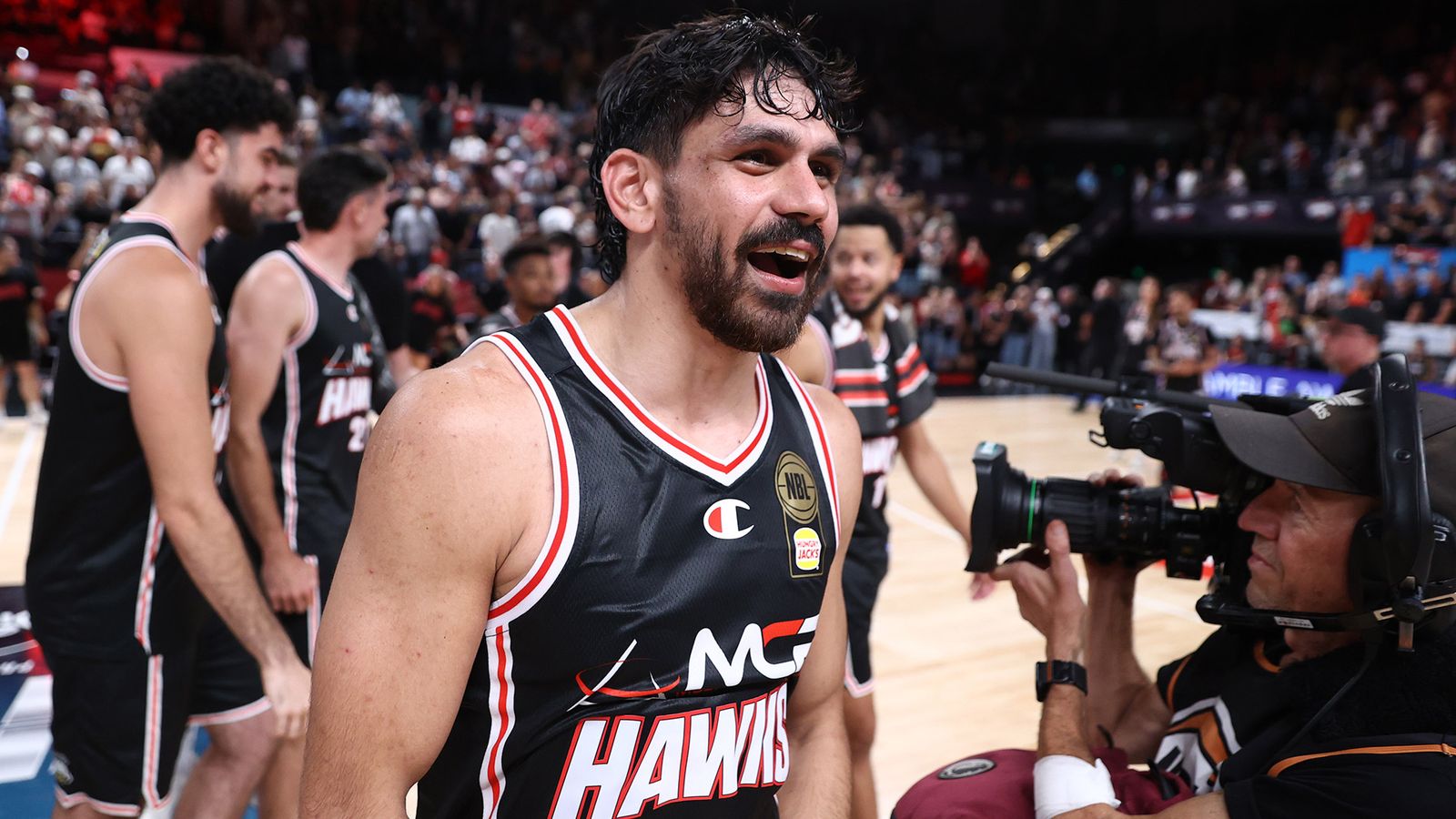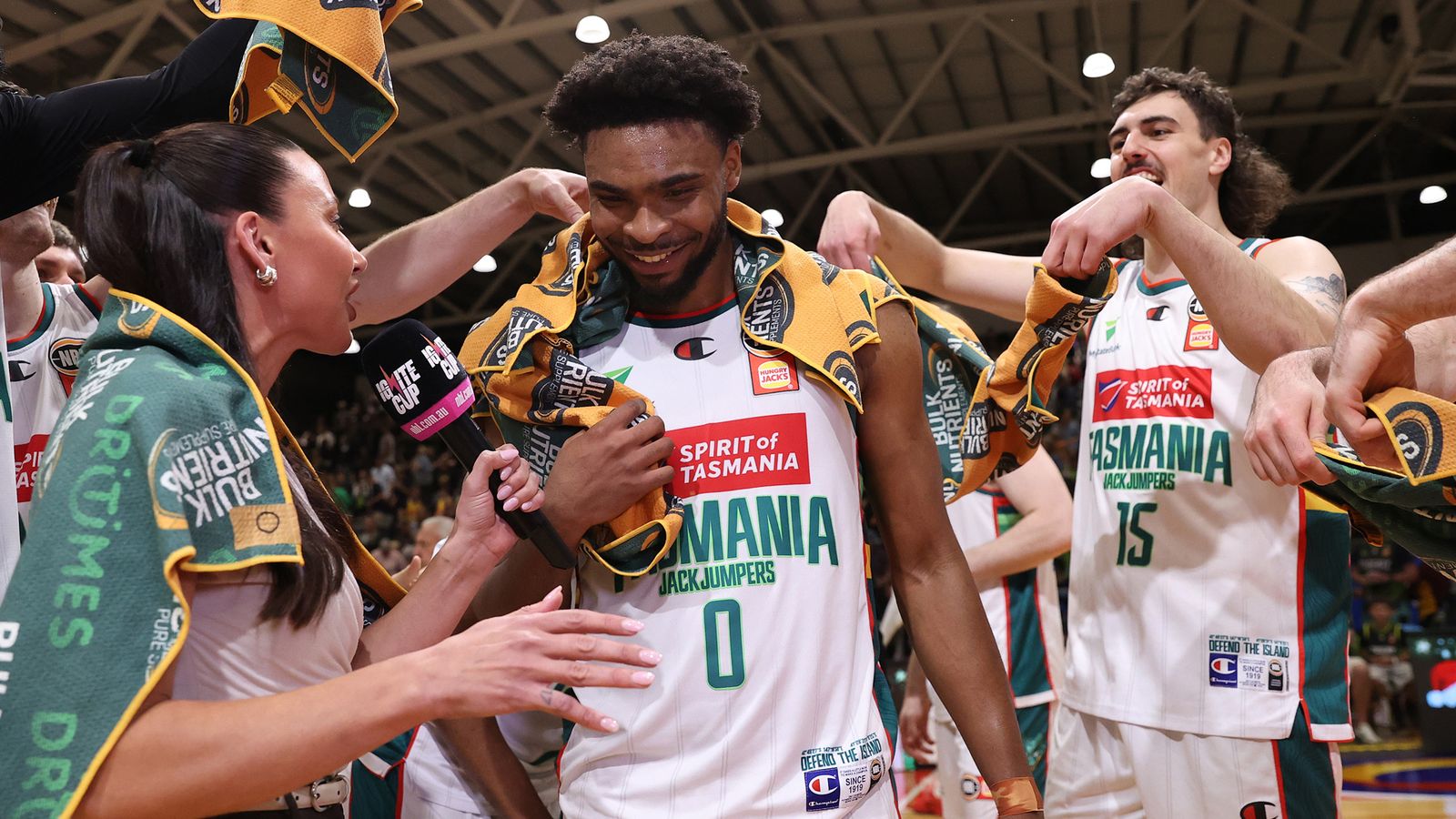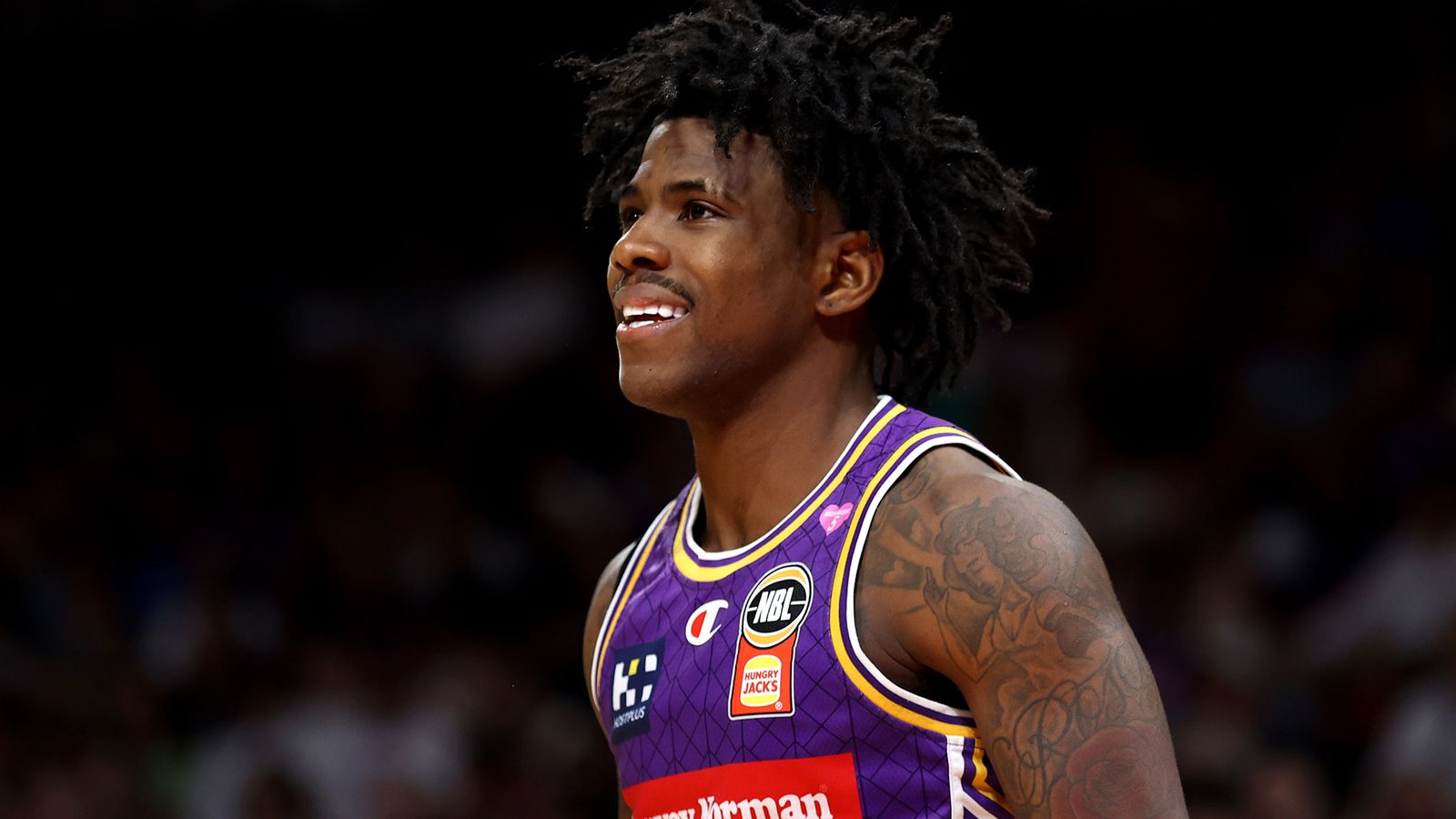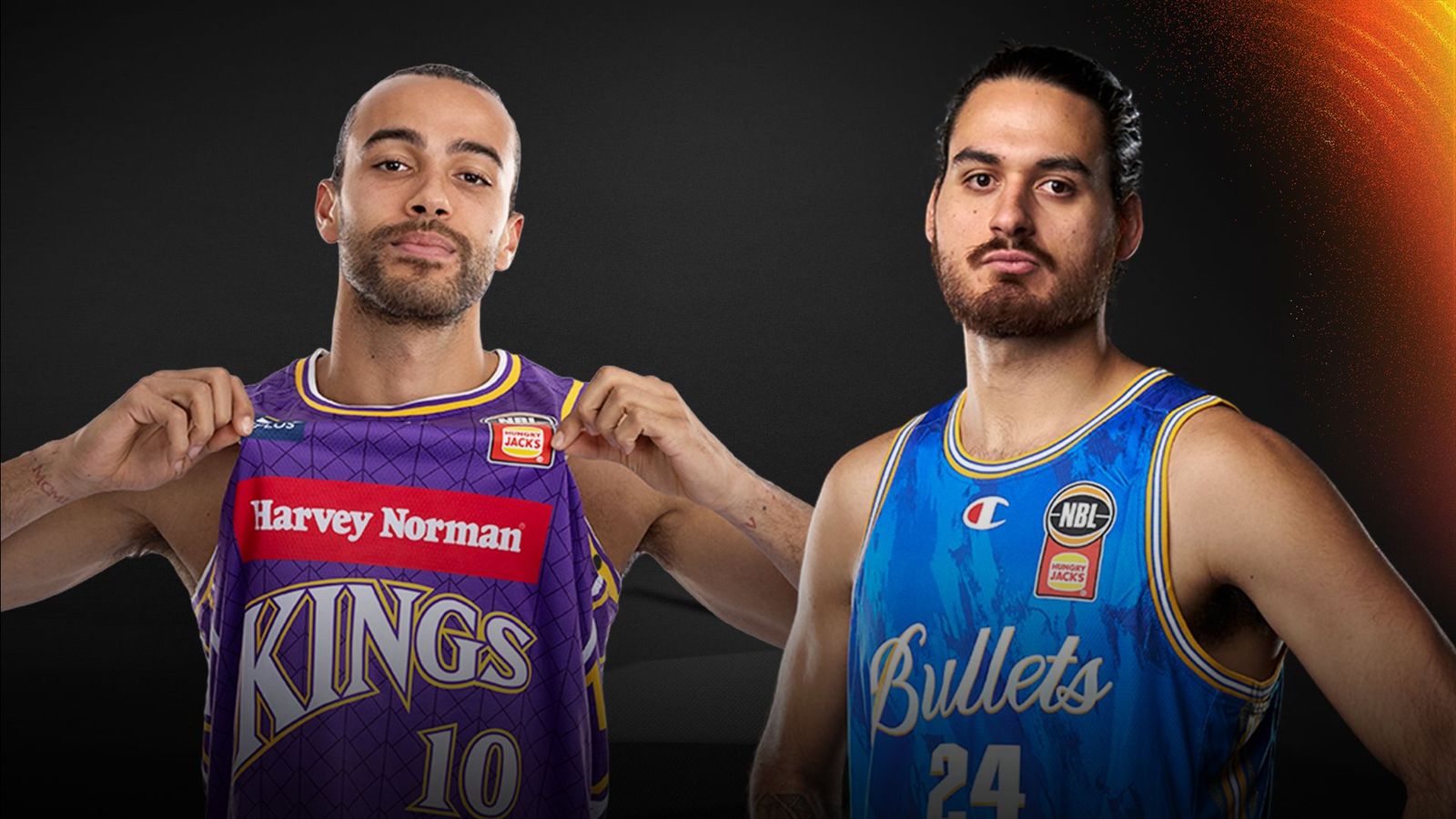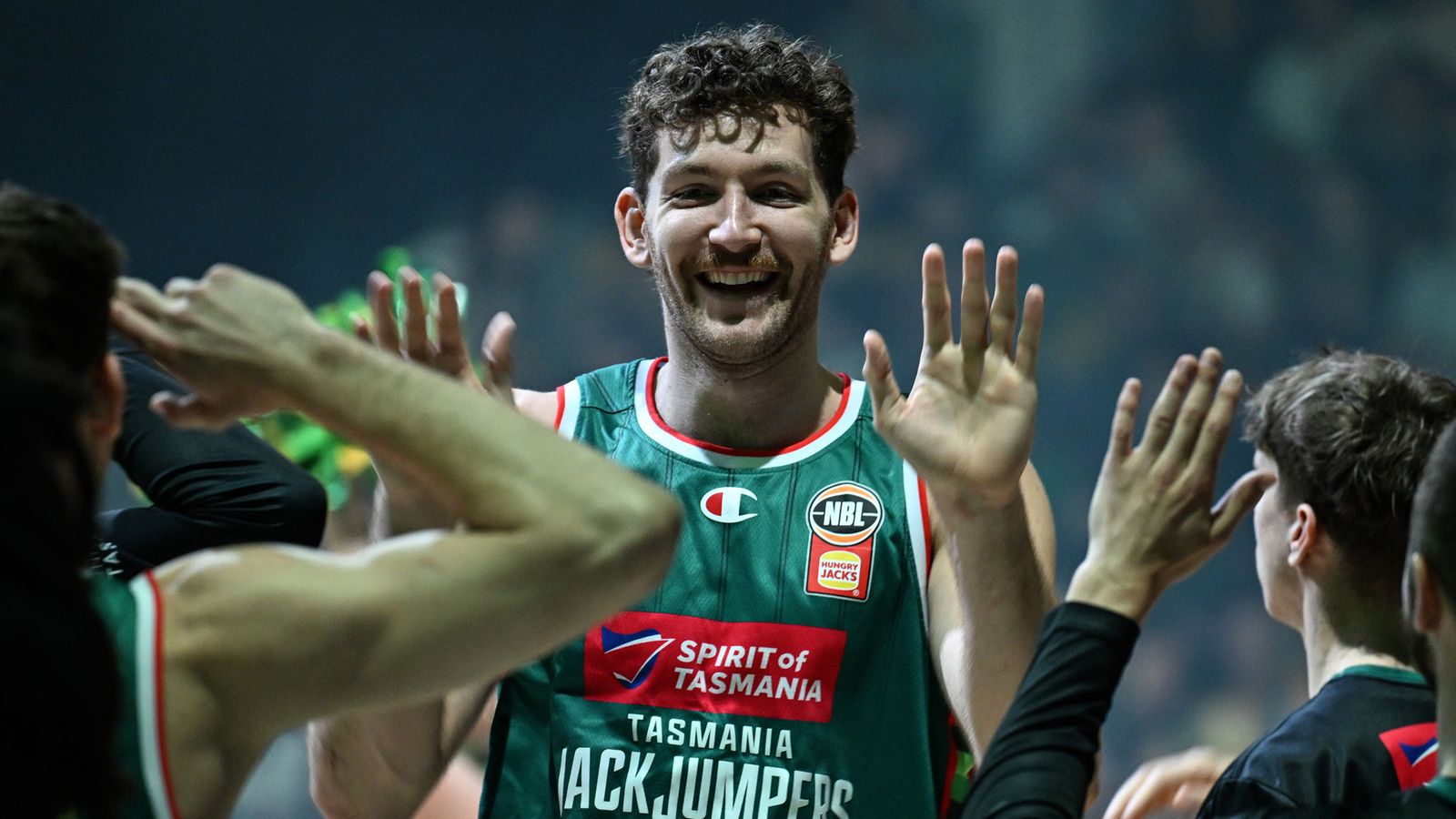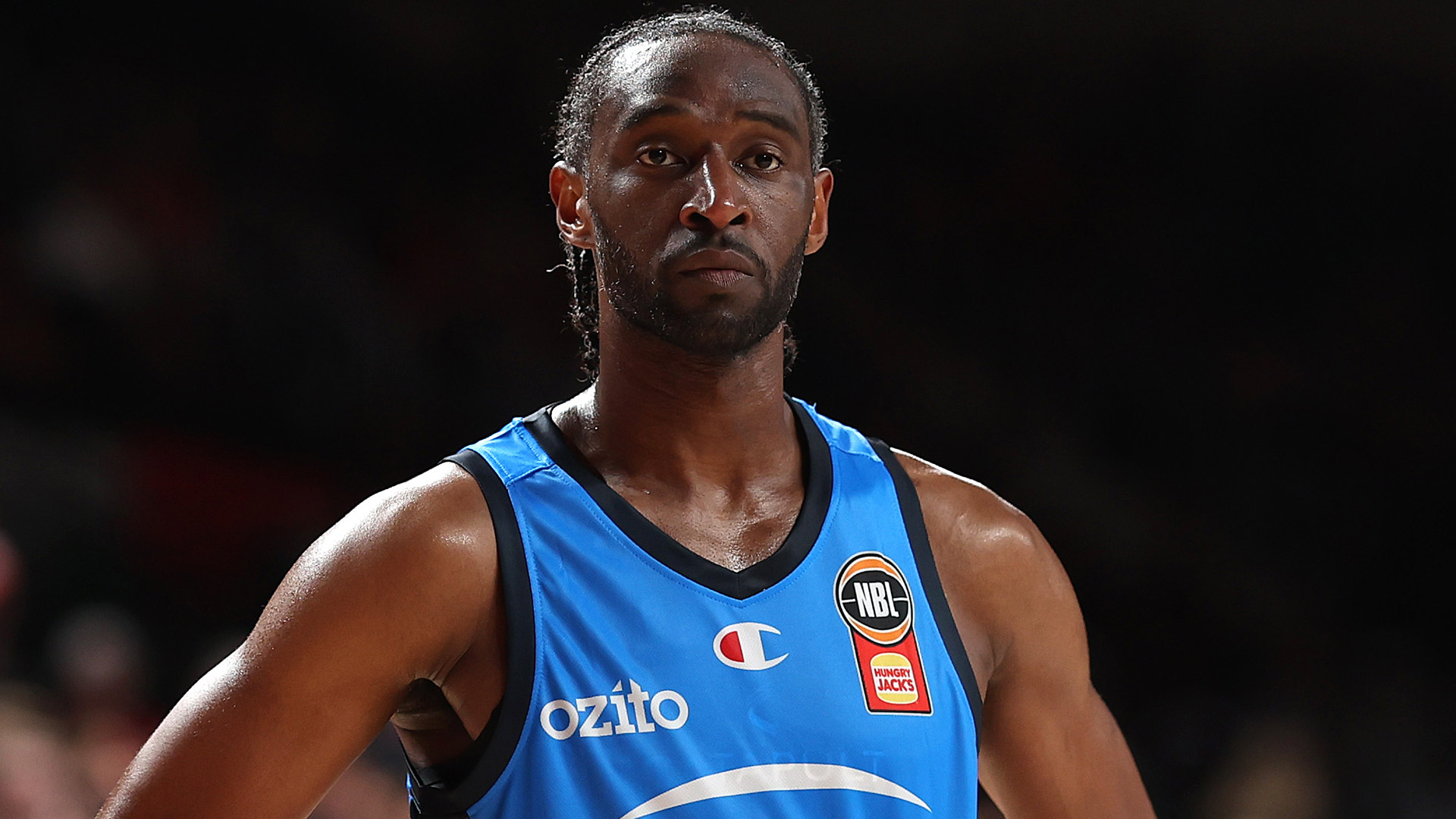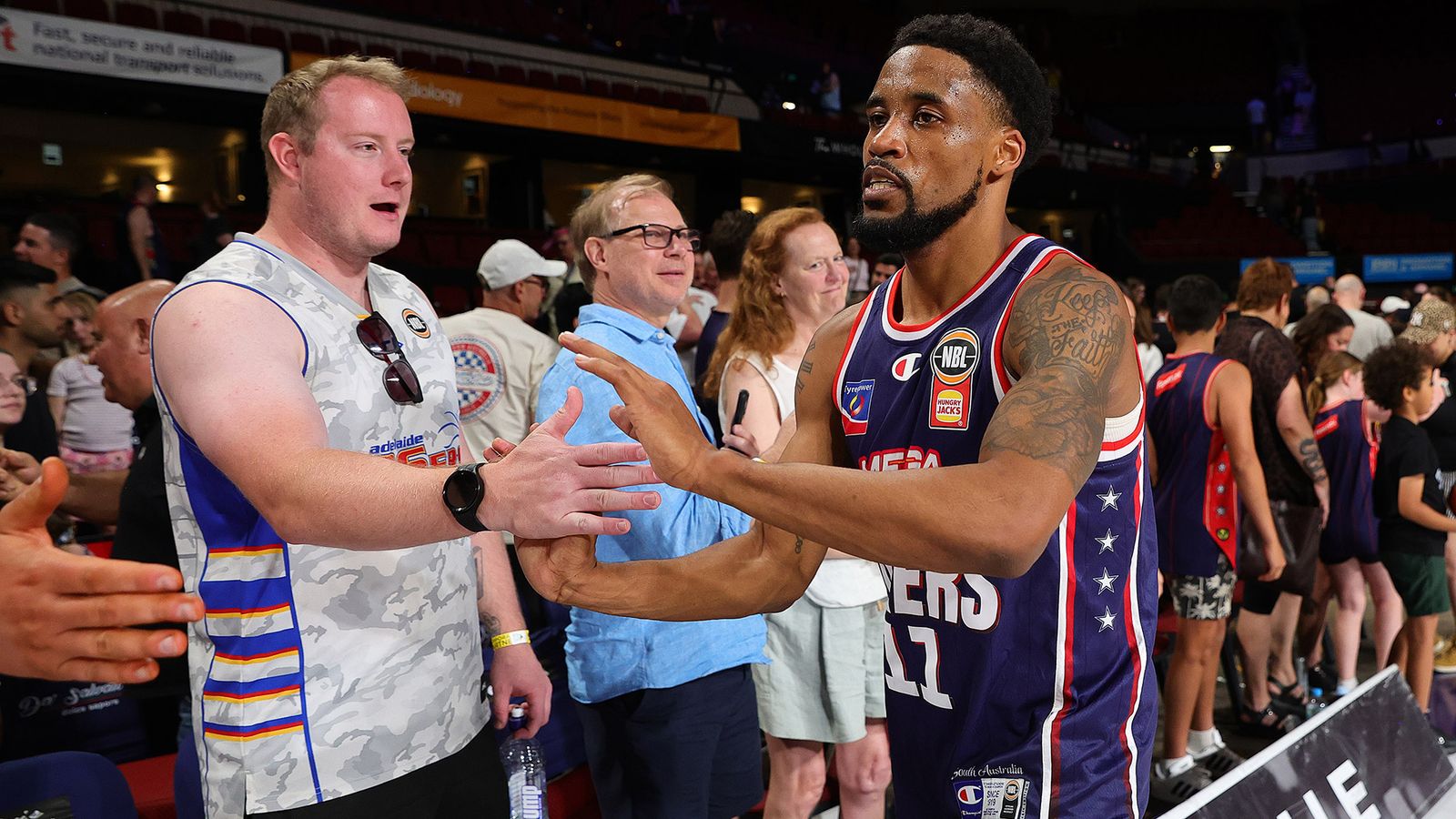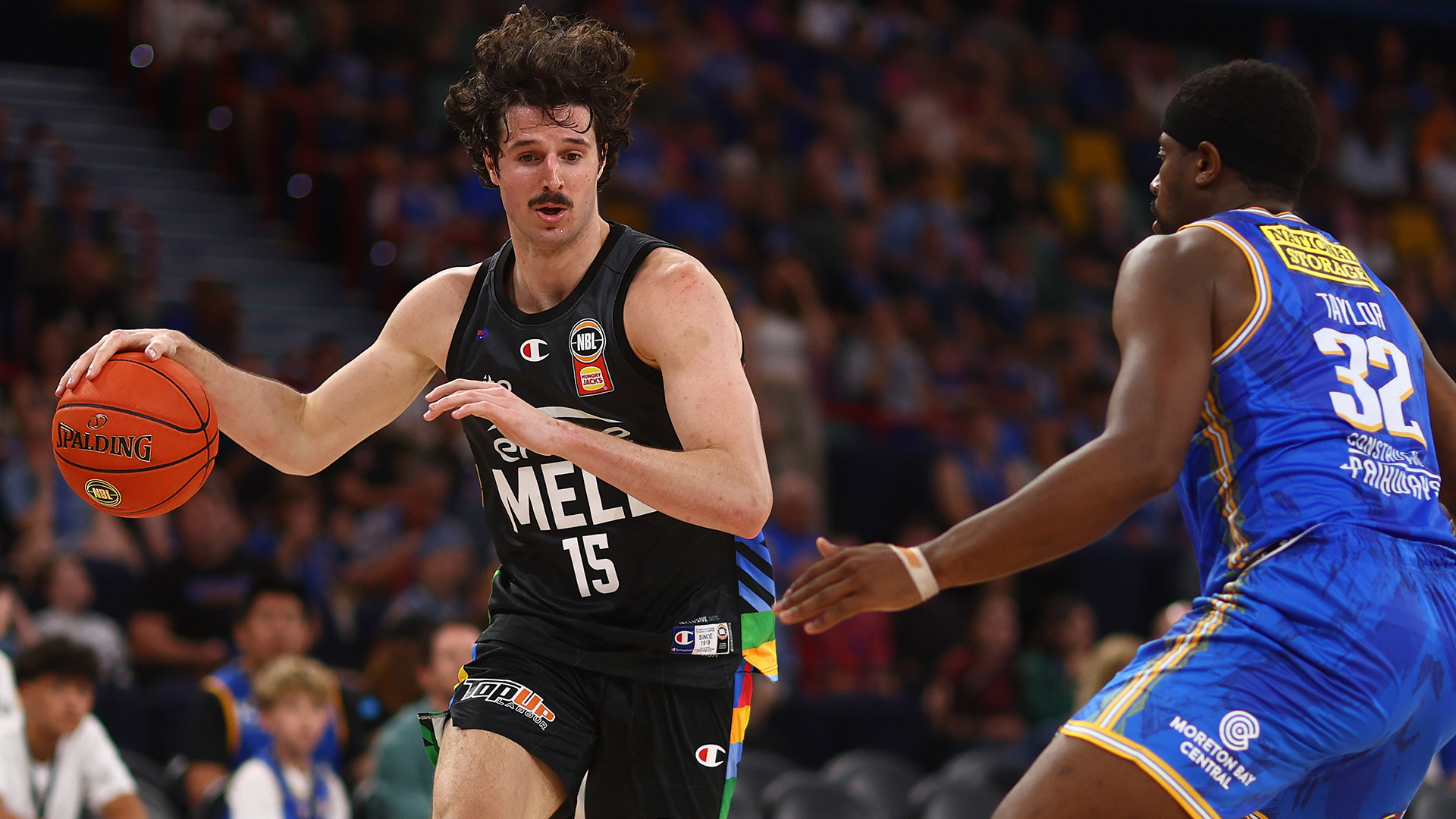Opinion: What would happen if five Australians returned home to play in the NBL?

WHAT would happen in a reality where five of the best Australian NBA players returned to their home towns to play basketball in the NBL? Why? Maybe the NBA gets shut down because of the coronavirus, maybe they all just consequently and simultaneously become so patriotic for Australia that they take their talent to the Aussie leagues. It may sound silly, but Troy Hanning explains what it could mean for the NBL.
1 Ben Simmons (South East Melbourne Phoenix)
If you put Ben Simmons on the Melbourne Phoenix, it is a guaranteed championship. It is that simple. The only thing Simmons cannot do is hit a jumper from 10 feet away from the basket.
But in a league where defenders are just a little slower to react and maybe a little shorter at the rim, Ben would average 40,15 and 10 by driving down to the rim and either dunking it or dishing it off to open cutters. Ben’s number one asset is that he is a point guard in a small forward’s body. He can dribble and dish at an elite level, and to add onto that, is 6’8″. That’s like being the most skilled driver in a race, and having the best car. If Ben was not 6’8″, with his elite dribbling skills and ability to find the open men, Ben would still be an elite point guard. Although his inability or insecurity to shoot long range jump shots is sometimes comical, the best of the best defenders have all taken a step back, anticipating the drive and still got scored on. So it is not like this limitation impedes on his impact on the game.
Simmons clearly has confidence issues because it is not that he cannot shoot, it is that he choose not to. There are plenty of videos showing Simmons hitting threes at training or at a pre-game warm-up, efficiently. In fact his shot is actually pretty nice, but he has refused to shoot every year, which only adds to the pressure to shoot more. But when he comes to the NBL, he will have a little less media coverage and a little less attention. Maybe that lack of pressure serves to help Simmons’ shot. But even if he never gets better at shooting, or even never gets better at basketball, he is already a top 20 player on the planet, at only 23-years-old. So his biggest concern should not be his shooting, but his teammates, and that’s why South East Melbourne Phoenix is a perfect destination for the star. Simmons could have just as easily been signed by Melbourne United in this reality, but the temptation imagining him playing alongside John Roberson and Mitchell Creek, two men feared for their long range abilities, was just too much.
Because for as great as Simmons is, we have never really seen him play in a system built to maximise his abilities. Which is honestly a compliment to Ben because he has been this good with teammates that constantly clog up the middle of the floor. If Ben was put in a team surrounded by four knock down shooters, the potential would be unlimited. Not to mention having the best shooter in the league in Roberson by your side, is a great way to start.
2 Dante Exum (Melbourne United)
In this reality, not only does Dante Exum sign with Melbourne United, but he also gets a completely new makeover, jumping from the point to the small forward. Do not get me wrong, Exum is a good point guard, but after contemplating every scenario of Exum at the one, the consensus was that the team is just too built around the backcourt of Shawn Long and Melo Trimble, to alter anything there. But surprisingly, this really works. Exum would be replacing Mitch McCarron’s spot in the rotation, who, while is a fairly decent scorer for the team, is just the one to make way in the starting five. Exum, who is a 6’6″ guard with a 6’9″ wingspan, would be used as a versatile small ball three who can make plays and defend nearly anyone on the court. World renowned as a phenomenal defender, who is athletic, long and quick, capable of shutting down anyone in front of him. It is fair to say that United would be lucky to have him in their arsenal.
Although whenever anyone talks about Exum, it is never about what he’s done in the pros, but about his potential. But to be fair, he has never been put in a position to succeed. When he was drafted to the Utah Jazz, they already had point guard Trey Burke, so immediately Exum was coming off the bench. And once Burke left, the Jazz, while also prompted by the starting of Rudy Gobert, became one of the best defensive teams in the league. But that progress was stunted with an unfortunate torn ACL (anterior cruciate ligament). He then was traded to the Cleveland Cavaliers who are simply a poorly run organisation, especially for a young player. That’s why in this reality, Exum can get as far away from Cleveland as possible, and be put on a team where he is given more attention, hopefully elevating his growth. With Melbourne United, Exum will be for the first time in his career, put on a team that highlights his strengths.
Because the potential of Exum is a real thing. His performance in the FIBA Under 19s Championships where he led the Emus to the semi-finals is evident. Along with him finishing second in the lane ability drill at the NBA Draft Combine, literally a test to see how quickly you can sprint, shuffle and back pedal around the key. In United, with Trimble, Long and Chris Goulding all averaging over 17 points a game, Exum just needs to be reliant on defence. This role would suit his playing style almost perfectly, as by being the leader of the defence, he is contributing to the teams success immediately while being able to take his time to work on the offensive fundamentals patiently. The upside of this reality is endless, but even if Exum can never quite find his groove offensively, every team wants a ‘stopper’, who can lock up anyone, and Exum just fits this role naturally.
3 Aron Baynes (New Zealand Breakers)
With lineups getting smaller and smaller every year, and bigs becoming less relevant from one generation to the next, some people are beginning to question whether a team centred around a big, can still be a serious contender. The answer is that the evolution of the game has not led to the extinction of a valuable big man. Rather, it has fostered a period of evolution. Luckily for New Zealand, Aaron Baynes is the poster boy of a big man that has evolved successfully with the changing times. From attempting a combined seven threes in his first five seasons to 168 this season, the progression is evident. That’s a 2400% difference, keep in mind the season ended prematurely. A lot of the time bigs who can shoot are lanky, awkward ‘athletes’ who can’t hold their own with the physicality and toughness required in the paint. That is not Baynes. If coach Shamir wants a player to protect the paint, grab boards, then either hit an open three or bully his way to a bucket. That is Baynes.
You can already picture it, Baynes setting a brick wall screen for Corey Webster, faking the roll, getting it and splashing it from the top of the three. The only real knock on Baynes (and nearly every other big man), is that he cannot create his own shot. Lucky for Baynes, the Breakers are full of selfless playmakers like Scotty Hopson and Sek Henry. But what stands to benefit the Breakers more than anything is Baynes’ esteemed experience. How often do you sign an upstanding veteran, whose played on four incredibly different teams with different expectations. From playing in two NBA finals to tanking, Baynes has seen it all, and has gathered a squeaky clean reputation. Nothing is worse than when you make a big free agent signing and the guy rolls in thinking the team revolves around him just to quickly become dismissive and deterred when things do not go his way. But Baynes’ teammates have had nothing but praise for the big man in each one of his stops, leading us to believe that his induction and progression with the Breakers would be more the same. If only this signing happened one year earlier, who knows, maybe RJ Hampton would stay another year. Baynes provides a similar physical presence to the likes of Andrew Bogut, and that guy has a pretty successful resume in the NBL. Just a classic bruiser in the paint who can attack the basket, hit a mid range and be a defensive nightmare for slashing guards.
4 Joe Ingles (Adelaide 36ers)
Having been born in the suburbs of Adelaide, the 36ers are the lucky team to sign Jinglin’ Joe Ingles. The former NBL Rookie of the Year left the league in 2009, and with his recent decline in minutes and his move to a bench role in the NBA, a return to the NBL might be more imminent than some believe. Ingles would be an asset to any team he plays on, because fortunate for Ingles, his skill set mixed with his size is exactly what every team in the modern NBL or NBA is looking for. A 6’8″ small forward who can be a team’s best playmaker while also shooting a career 40% from three. That’s because every value Ingles possesses, is transitional to any team or league Ingles is on. So when he joins the 36ers, he will still be an elite shooter, who can run an offence while also rebounding well, hence he will make the team better. Because of this versatility, he would also be the focal point of the offence, an important label every team needs yet the 36ers struggle to have, as the top three scorers of the team are all within five points difference of each other. Clearly Adelaide has the talent, but when you finish seventh in a nine team league, the roster just needs a superstar, a guy who can be the best player on a championship team in the NBL, that is Joe Ingles.
What is crazy is that Ingles might actually be getting better. While the 32-year-old’s stats might only show a steady pace, Ingles limited experience in the NBA hints he still has more to learn, especially compared to other similarly aged athletes in the league. A great example of this development is in how he has been getting his three point shot off. In his first five seasons, 85 per cent of his threes came off assists, where Ingles would be waiting patiently somewhere on the three point arc for a driving cutter or fellow wing to whip him the ball, giving Joe an open shot. However this year, we have seen the Aussie begin to actually dribble into three-point attempts, coming down the court in transition or around a screen. This added element has not only expanded Ingles’ offensive skill set, making him a more lethal shooter from outside, but is evidence that Ingles still wants to grow as a basketball player. That desire to improve at his age, where he has already reached the NBA, and is already famous, and already has a bountiful salary, is a much less rare commodity then people would believe. That attitude is contagious and would really benefit a player like Harry Froling, who like Ingles, won the Rookie of the Year in 2019, and might have aspirations to one day play in the NBA. Coming from similar backgrounds, Ingles’ mere presence on the team might keep the future centrepiece satisfied and in 36ers jersey for a long time.
5 Thon Maker (Perth Wildcats)
While Maker was born in South Sudan, he and his family moved to Perth at the age of five. He already has experience on the international scene for the Boomers and has an Australian passport. For this experiment given his hometown, Maker would qualify to play for the Wildcats. Maker is listed at seven feet and has a career accuracy of 32 per cent from three-point range. If that is not all you need to know about Maker before understanding how valuable a player like he is, he also possesses great leaping ability to go with his super-elite reach and wingspan. He can also run the floor, showing good ball-handling, passing, and shooting tools.
For other teams, there might be a little friction when a NBA player comes in and takes your spot, but this is one of the rare occasions where the team and the player just fit perfectly. In terms of dropping Maker at the five, it would look like the Perth Wildcats would have two options about how to execute it. First is to put Miles Plumlee at the four, accompanied by Maker at the five. This twin tower dynamic would wreak havoc in the paint. Just imagine Bryce Cotton sliding through massive screens to get a shot off, confident that one of the two giants will get the offensive rebound. Or if Cotten cannot get the shot off, since they are screen heavy, one of the two will likely have a mismatch they can exploit in the low post. However, having two slow centers risks the team being a liability when opponents inevitably try and switch the big fellas on the quicker guard.
Although another plan of attack would be to just throw Plumlee on the bench. This is not an insulting adjustment because Plumlee has now more responsibility than ever. He is now the leader of the second unit and as a veteran with lots to contribute, he would thrive in this role. When he subs in, there are going to be mismatches everywhere for the Wildcats to capitalise on. Since every contending team has at least one person sacrificing their talent for the better of the team, Plumlee would have to take the step back in order to win.
No matter how it happens, this team is much better with Maker than without. One of the Wildcats’ few flaws is their rebounding, so having a seven-footer who despite lacking strength, does not shy away from contact, is a clear advantage. The little to big dynamic of Cotton and Maker would sell out arenas, not just because it is an entertaining novelty, but there really is no ceiling to how good they can be. If they could master the pick and pop, they would be unstoppable. That is not an exaggeration, it would nearly be impossible to get over a screen from Maker fast enough to deflect him getting it and then trying to disturb the seven-footer shooting a jump shot. Maker and Cotton would be the evolution of the pick and roll. For him to ever reach this ceiling, it would take an incredible work ethic, which by all accounts Makers has, and a surge of confidence, which a league like the NBL can help foster.


















